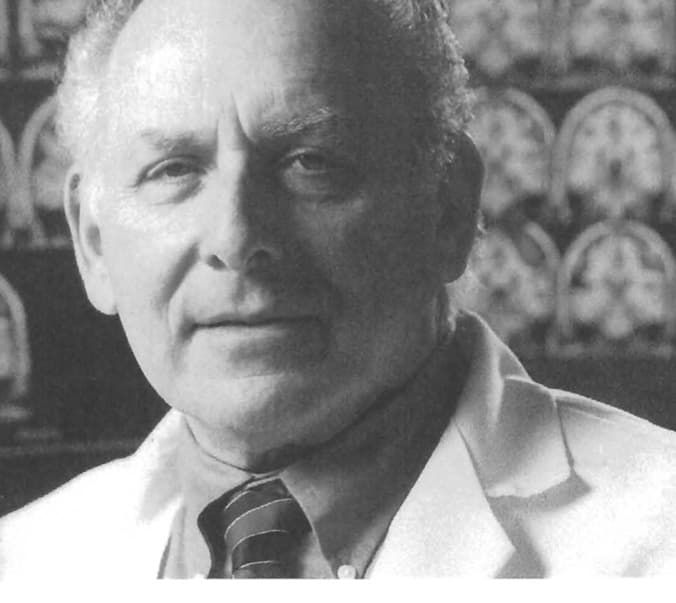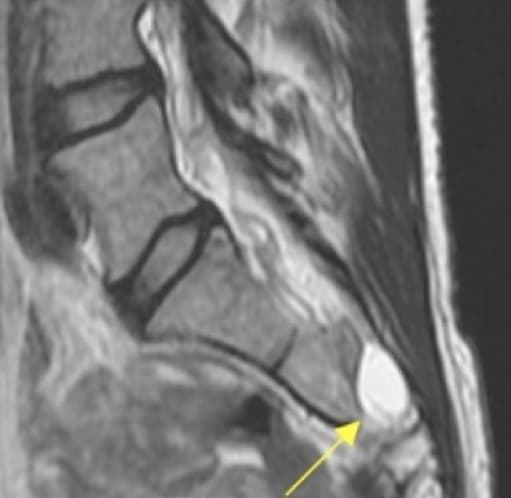Advertisement
Story Of A Sexual Syndrome: New Clues, Possible Fix For Some With Relentless Arousal
When last I spoke with Jeannie Allen a dozen years ago, her relentless pelvic torment had just been newly labeled as a rare but bona-fide condition affecting mainly older women: Persistent Sexual Arousal Syndrome.
Please, no quips about middle-aged women feeling like typical teenage boys. It’s no joke. More of a nightmare: genital congestion and pulsation, unwanted and wholly apart from sexual interest, that never subsides, no matter how many orgasms. It’s not nymphomania or sex addiction because it's not about desire. It’s better compared to priapism in men: unwanted, often painful, prolonged erections.
One snickering doctor told Allen she was every man’s dream. “I wanted to punch him,” she recalled in 2003. “I'm suffering here, and he's laughing, 'Hardy-har-har.' So I looked him in the face and said, 'How would you like to walk around on the verge of orgasm every second?' And he shut up."
When she went public back then -- “Sexual Syndrome That Takes Joy Out Of Life” — Allen was a lone voice, one of just a handful of women known to have the syndrome, and the only one willing to be public about it (under her pen name, Jean Lund).
She’s not so alone these days. The syndrome, no longer seeming so rare, has been featured on "20/20" and “The Doctors.” Estimates of total prevalence range into the thousands. There are hundreds of women — and a few men — on her online support forum for what is now called PGAD — Persistent Genital Arousal Disorder.
And the existence of that network has helped spur research into the disorder. Most recently, a paper in a leading gynecology journal this week reports that in some cases, spinal cysts may cause the syndrome, and so spinal surgery may help.
"It's not imaginary."
Dr. Barry Komisaruk
There’s likely no simple solution for the disorder, Allen said this week. “It’s not the same for everyone, and I really do not believe it’s one thing that’s causing it,” she said. “I think it’s a cocktail of things and different for every person.”
But research is beginning to cast light on possible biological causes -- and possible treatments. It’s also offering new backing for patients who reject the “It’s all in your head” diagnosis.
The moral here may be, “Doctors should believe what their patients tell them. First of all, and before assuming that it’s a psychological problem, make sure that any physical problem is ruled out,” said Dr. Barry Komisaruk, distinguished professor of psychology at Rutgers.
He has scanned the brains of patients with the syndrome and found activation patterns that mean “it’s not imaginary.”
Almost every woman with the syndrome he’s met has been prescribed antidepressants, Komisaruk added.
“Well, if you had a thorn in your toe for 10 years causing you continuous pain, you’d be depressed and frustrated, and an antidepressant would not exactly be the treatment of choice,” he said.
This week’s research also suggests that doctors should consider checking for cysts that could be causing the disorder in some patients, Dr. Frank Feigenbaum, the paper’s lead author, said.
“The take-home is that a gynecologic practitioner should think about getting an MRI in the lumbar spine in the patient who presents with Persistent Genital Arousal Disorder,” Feigenbaum said, “particularly in the setting of other symptoms of compression of the sacral nerve roots.”
Brain Scans and Obscure Cysts
Sacral nerve roots? Yes, the research suggests that the disorder can arise from problems with the sensory nerves that run from the genitals up to the brain. The sacrum, a bone at the base of the spine just above the tailbone, could be key here.
But first, let’s back up. Any story of Persistent Genital Arousal Disorder has to begin with Dr. Sandra Leiblum, who was director of the Center for Sexual and Relationship Health at the Robert Wood Johnson Medical School in New Jersey and a prominent authority on sex therapy and female sexual response. She published the first journal paper on the disorder in 2001, and her academic heft and energy were clearly key to the recognition it gained.

“She got the ball rolling, no question about it,” said Komisaruk. Leiblum died in 2010, but not before rolling the ball to him, among others.
She asked Komisaruk, who researches the brain basis of sexual response, to record the brain activity of women with the arousal syndrome, spurring his interest in it.
He found an abnormally large area of activation in the part of the brain that responds to input from the genitals.
“There was a common attitude that ‘This is all in your imagination,’ but it really was brain response,” he said.
After he presented some of his data on “The Doctors,” he heard from an M.D. whose wife has the disorder. And by the way, the doctor told Komisaruk, she also has a Tarlov cyst.
Komisaruk had never heard of Tarlov cysts, an obscure form of spinal cyst that is traditionally believed to be insignificant, causing no symptoms.
But when he looked into it, he learned that Tarlov cysts tend to form at the base of the spine, where the sensory nerves from the genitals enter the spinal cord. Irritation of those nerves could be producing the genital arousal symptoms, he thought.
Because a Tarlov cyst is basically a blister or bulge right where the genital sensory nerves enter the spine, he explained, it may cause trouble by rubbing on the bone — much as hitting your elbow can give you an odd sensation because the bone is stimulating the nerve there.
Komisaruk knew Jeannie Allen — he had scanned her brain, and they had been on “The Doctors” episode together — and got in touch: Could she send a shout-out to the women in her online support forum, asking them to send in their spinal MRIs, if they had them?
Komisaruk also enlisted Dr. Huey-Jen Lee, chief of neuroradiology at the University of Medicine and Dentistry of New Jersey, to assess the scans.
The MRIs rolled in. Lee had researched Tarlov cysts before, Komisaruk said, and found that they showed up in MRIs of about 1 percent of the patient population.

But among the MRIs that Komisaruk brought over to show Lee, one after another showed Tarlov cysts. Out of a total of 18 MRI scans, Komisaruk said, 12 had cysts — a full two-thirds.
They published the findings in the Journal of Sexual Medicine in 2012. The Tarlov cyst hypothesis would explain why using local anesthesia on patients‘ genitals doesn’t generally work, Komisaruk said: The patient perceives the symptoms as coming from the genitals “but the real source is upstream,” in the nerves headed for the brain.
Seeking further proof that Tarlov cysts could really cause the arousal symptoms, Komisaruk enlisted two Johns Hopkins colleagues who had been working on draining the cysts and sealing them with special glue.
The treatment looked promising, he said, but when he applied for a federal grant to explore it further, he was rejected.
“Two of three reviewers said that it’s well known in the medical community that Tarlov cysts don’t produce any symptoms,” Komisaruk said.
But now he’s thinking maybe he should reapply, he said. This week’s study in Obstetrics & Gynecology — widely nicknamed “The Green Journal” — supports his case.
Surgical Series
Beginning in 2009, study lead author Feigenbaum, a spinal neurosurgeon in Dallas who specializes in cysts of the membranes that envelop the spine, operated on 11 patients with Persistent Genital Arousal Disorder and spinal cysts. Eight had Tarlov cysts.
Among the 11 patients, he writes, eight reported that their genital arousal symptoms had gone away; three reported the symptoms were much better and one saw no change. None got worse.
He concludes that sacral nerve compression by cysts — Tarlov and others — is indeed linked to the arousal disorder “and it is reasonable to conclude that it is causal.”

"It really wasn't that big a stretch of the imagination," Feigenbaum said, because he has seen other patients with sexual dysfunctions arising from that same nerve compression, most often pain or numbness during sex. "It seemed very logical."
Dr. Irwin Goldstein, director of sexual medicine at Alvarado Hospital in San Diego, applauded the paper as a landmark step in showing a physical cause of the arousal syndrome.
“The bottom line is, it has a biologic trigger, and we now have evidence of a group of women [in whom] you can actually stop this condition, which otherwise was considered lifelong and unstoppable,” he said.
Though that is not to say, he cautioned, that the syndrome has a single cause, and a single treatment will suffice. There are perhaps two dozen potential causes, he said, but the findings by Feigenbaum and Komisaruk identify one useful trigger that can potentially be removed.
“We’re going to find that there are multiple reasons and multiple therapies,” he said, “and we have to accumulate them.”
Jeannie Allen was more skeptical about the potential impact of this week’s paper. She herself does not have a Tarlov cyst, and among four women in her support forum who had Tarlov cysts treated, she’s heard of three bad outcomes and just one good one, she said.
“I’m always skeptical when doctors make claims for things,” she said. “I’m skeptical because I don’t know whether they’re making it sound better than it is in hopes that their report will get them funding, or that it will help them get more patients.”
Komisaruk, for all his interest in Tarlov cysts, points out another downside of operating on them: It’s “major surgery.”
He’s working with colleagues now on a different approach: They’re trying to identify the neurotransmitters at work in the genital sensory nerves, figure out which ones are excessive in genital arousal patients, and ultimately try to counteract them with medications that block their action.
Passing The Baton
So after 20 years of having Persistent Genital Arousal Disorder, and a dozen years as an activist helping hundreds of women in a similar plight, how is Jeannie Allen?
She sounds tired. But also wise.
Allen is almost 64 now, still living near Los Angeles and retired from her job in a film-industry payroll company. About four years ago, she said, she “threw in the towel” and accepted that her disorder was not going to go away. She decided to fight it less and accept it more, and to no longer let it be the center of her life.
"I do not regret it all, not at all, because look how many people were reached that were suffering."
Jeannie Allen
Focusing more on the mind-body connection, and knowing that stress and high emotion tended to make it worse, she has devoted more effort to self-care — meditation, massages, positive thoughts. It helps, she said, that her symptoms have diminished.
“I have it, but I’m nothing like I was when you and I first spoke, or many years afterward,” she said. “I could’t stand or sit on the bus; any vibration would act like a stimulant on me. It was horrible.”
As part of her transition to a calmer life, she’s hoping to hand off her online forum work to others next year.
It has been an intense and sometimes heartbreaking journey. She knows four women with the disorder who have committed suicide; one, Gretchen Molannen, had just been covered in the Tampa Bay Times; without health insurance and denied disability, she could not afford an MRI to check for a possible cause of the disorder that was wrecking her life.
Regrets? I asked Allen.
“I do not regret it all, not at all,” she said, “because look how many people were reached that were suffering and getting the same kind of treatment I was, and just not going to be able to go anywhere.”
Now, she said, her goal is to make sure the online forum and advocacy will continue without her.
“I don’t want to think about Persistent Genital Arousal Disorder except for just dealing with it myself,” she said. “But there have got to be people who keep going forward advocating and not just let the ball drop.”
At the bottom of her email messages is a quote from an unknown author: "Don't be discouraged. It's often the last key in the bunch that opens the lock."
